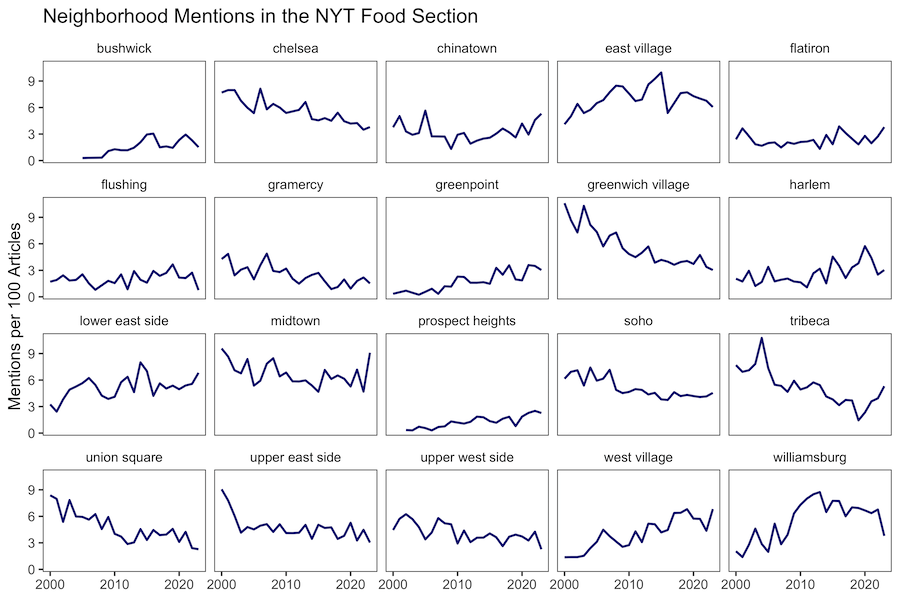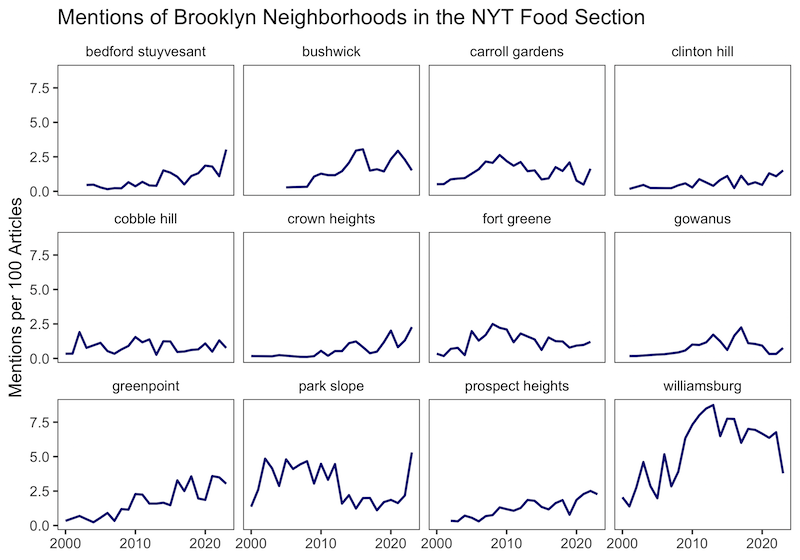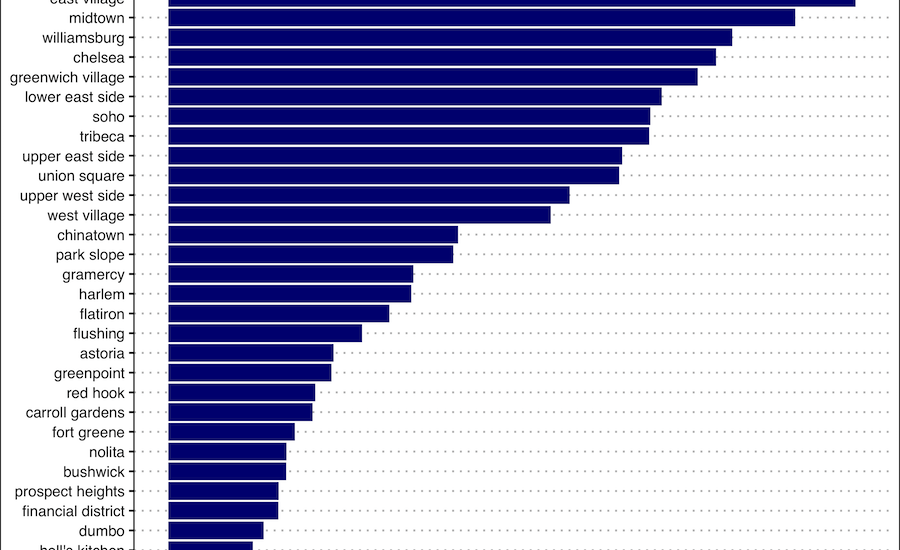I find myself going to the same neighborhoods again and again and a lot of it is driven by the restaurant reviews my friends read. I was curious to see how well the data reflects my sense of neighborhood popularity and how they have changed over time. I have lived in New York for two years now and I have a vague sense of which neighborhoods are ascendant but wanted to see if anything surprised me.
I came up with a list of ~40 neighborhoods and counted their occurrence in the Food section since 2000. The list is by no means exhaustive, it just reflects the places I know and tend to go. I know Brooklyn best since I live here and so its neighborhoods are more granular.
These are the top neighborhoods by total mentions since 2000:

There’s been quite a bit of change in the last 23 years which I look into below.
Williamsburg’s rise
There are a few interesting trends in the cumulative rankings since 2000, but Williamsburg’s meteoric rise is the clearest.

The rise of Williamsburg is not surprising but it is striking to see how it came from nowhere and is now up there in the rankings with Manhattan neighborhoods.
The decline of “Greenwich Village” is interesting, and I think is more a reflection of what people call that area as opposed to the popularity of the neighborhood itself (it feels like people now refer to the West Village or just “the Village”; I’m not sure when that happened because I am not a Real New Yorker).
This was my first time making an animated bar chart race and it was fun to learn. This tutorial was very helpful.
This is a look at the top 20 neighborhoods year by year:

How Brooklyn Neighborhoods Have Fared in The Rankings
Aside from Williamsburg, Manhattan dominates the rankings and I wanted to see how Brooklyn neighborhoods have moved over time, so I looked at Brooklyn exclusively. Again, I focused on the neighborhoods I know best, if you’re interested in a specific area let me know.

Williamsburg is clearly dominant in Brooklyn although seems to have slowed down a lot (which I am pleased with). Park Slope had a fairly precipitous drop in ~2013 but may be coming back (I did just have a delicious meal at al di la trattoria, highly recommend).
Greepoint feels to me like the epicenter of trendy food in Brooklyn and is rising but still fairly low. Bushwick simply didn’t exist before 2005 but has lots of good food and is being called out more and more. My home in Prospect Heights seems to be picking up steam, which I am cautiously optimistic about.
A note on the commercial value of this data
I used to think that data like this would be commercially valuable because it could give insight into market trends. Now I am not so sure. For example, let’s say a real estate investment group wanted to invest in New York. They could look at this data and see which neighborhoods are hot. But, if they were serious about deploying money, they would engage real estate professionals who know the New York market and they would have a good sense all of this already, and would have a much more nuanced understanding of anything going on than this data could yield.
More generally, I think market trend data like this is useful if you are an outsider to a market, but if you are actually going to trade in a market then you will work with insiders who will understand market trends already. This makes it less valuable and harder to sell. I would love to be proven wrong, though, so if you’re a real estate person reading this feel free to find me on Venmo.
Let me know if you’re interested in similar data
This data is fun to play with and pretty easy to collect through the NYT API. If you’re curious about something or would like to play with the data, email me at joe @ this website or contact me on twitter.
Thanks for reading! If you’re interested in this sort of thing, sign up below and I will notify you when I write something new.
